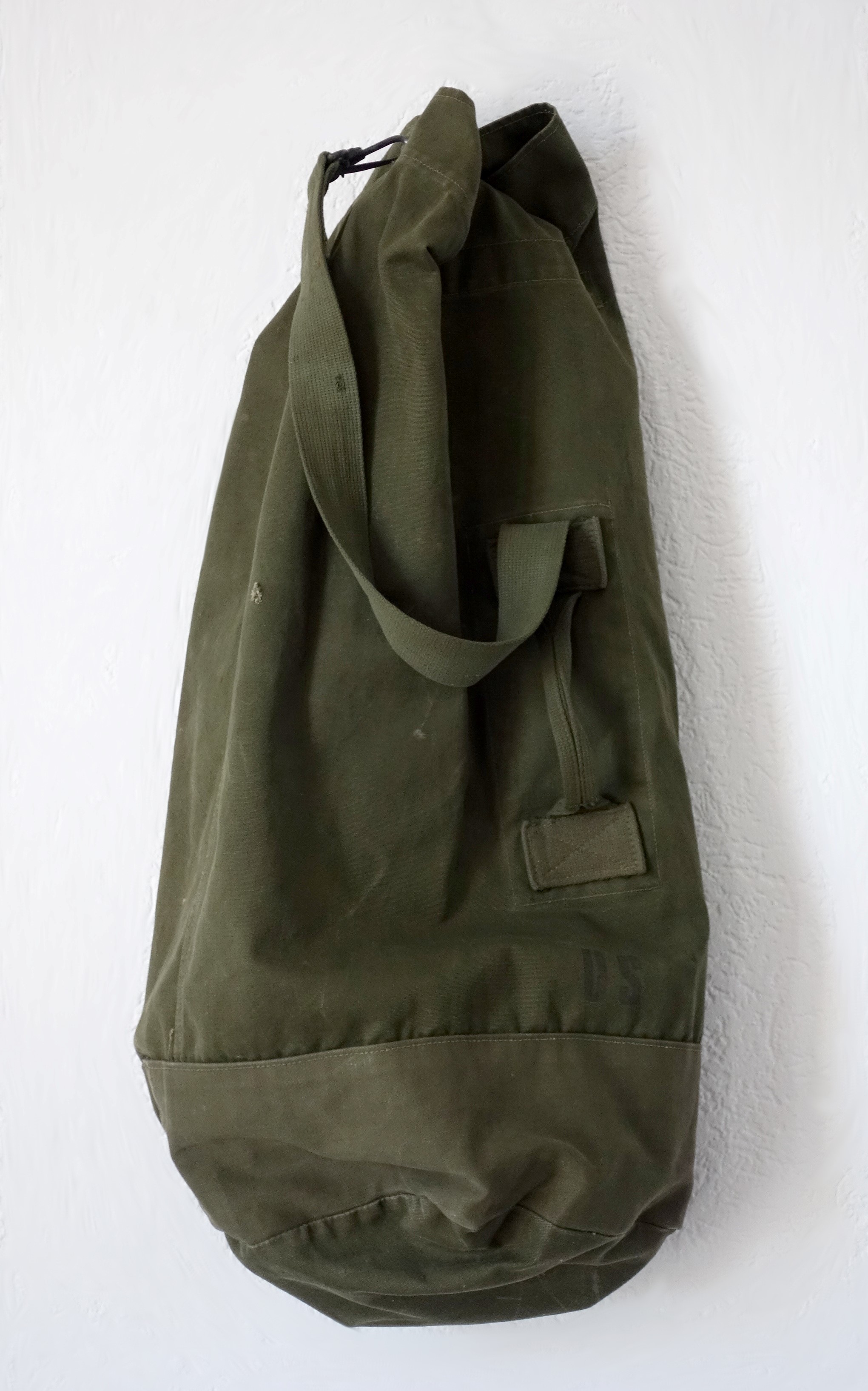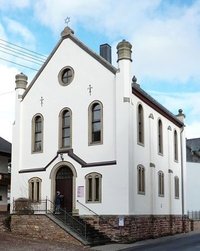This duffel bag with shoulder strap is made of heavy duty, olive green cotton fabric. The black label identifies it as a U.S. Army transport bag. It belonged to Richard Hirsch, who received it upon his release from the military hospital in Feldafing, Germany in 1945. He passed on this piece of memorabilia to residents from his old hometown when they visited him in the United States, from whom it was later donated to the former synagogue in Laufersweiler.
Richard Hirsch was born in 1915 as the youngest child to the Jewish family of Siegmund Hirsch and Rosalie née Lorch in Kastellaun. He grew up there together with his four siblings, Betty (1903), Irma (1905), Erich and Julius (1911). His father was drawn into the First World War just a few months after his birth, where he was severely injured and eventually died as a consequence of his war injuries in 1928.
From 1929, Richard Hirsch worked as a salesman for the Jewish company, Katzenstein, until he was arrested on the morning of the 10th of November 1938. He and his brother, Julius, were deported to the concentration camp in Dachau. He was released in February 1939 under orders to leave Germany as soon as possible, but
Hirsch went to Cologne instead. He should have again been deported in 1942, but was saved thanks to his friendship with a Christian family who hid him in their house. After four months, however, Gestapo agents stormed the house and he was arrested once again.
He was deported to Auschwitz in March 1944 and tattooed on his left arm with the prisoner number 182793. As the Russian Army was approaching the camp in the middle of January 1945, SS troops began clearing the camp. Richard Hirsch was brought to Dachau once again, where he stayed until dissolution of that camp and the start of the death marches in April. It was only after days of aimless travelling back and forth in a wagon that he was freed on the 30th of April 1945. Yet, he suffered a severe illness during the days that followed and was admitted into the infirmary set up by the American soldiers in Feldafing. They treated him for typhoid fever, cardiac insufficiency and barber's rash. Upon his released after about three months, he decided to return to his hometown of Kastellaun, using this U.S. Army duffel bag to carry his few belongings.
Although he tried to start a new life in his old hometown, taking up his old profession as a salesman and even getting married, the memories weighed too heavily. In August 1949, Richard Hirsch left the town together with his wife and emigrated to the USA. This time, too, the duffel bag served as a piece of luggage.
de

